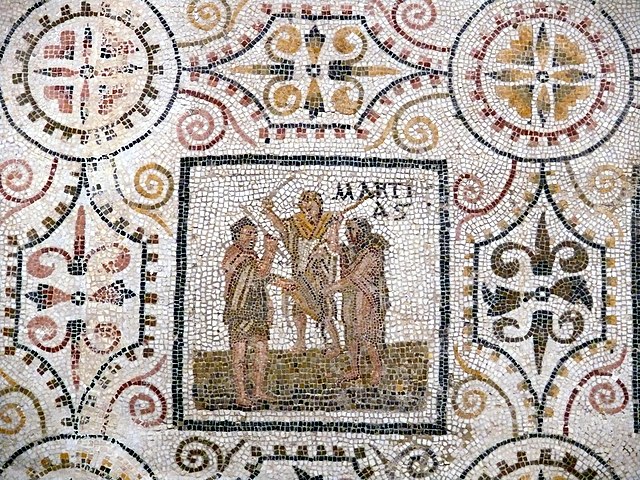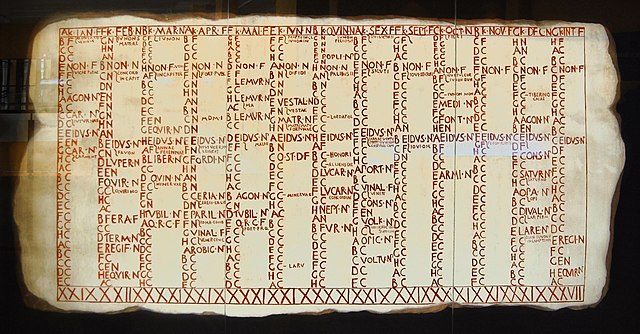The Ides of March is the day on the Roman calendar marked as the Idus, roughly the midpoint of a month, of Martius, corresponding to 15 March on the Gregorian calendar. It was marked by several major religious observances. In 44 BC, it became notorious as the date of the assassination of Julius Caesar, which made the Ides of March a turning point in Roman history.
The Death of Julius Caesar (1806) by Vincenzo Camuccini
Panel thought to depict the Mamuralia, from a mosaic of the months in which March is positioned at the beginning of the year (first half of the 3rd century AD, from El Djem, Tunisia, in Roman Africa)
Reverse side of the Ides of March Coin (a denarius) issued by Caesar's assassin Brutus in the autumn of 42 BC, with the abbreviation EID MAR (Eidibus Martiis – "on the Ides of March") under a "cap of freedom" between two daggers
The Roman calendar was the calendar used by the Roman Kingdom and Roman Republic. Although the term is primarily used for Rome's pre-Julian calendars, it is often used inclusively of the Julian calendar established by the reforms of the Dictator Julius Caesar and Emperor Augustus in the late 1st century BC.
A reproduction of the Fasti Antiates Maiores, a painted wall-calendar from the late Roman Republic
The remains of the Fasti Praenestini, containing the months of January, March, April, and December and a portion of February.
A fragment of the Fasti Praenestini for the month of April (Aprilis), showing its nundinal letters on the left side
A fragment of an imperial consular list







